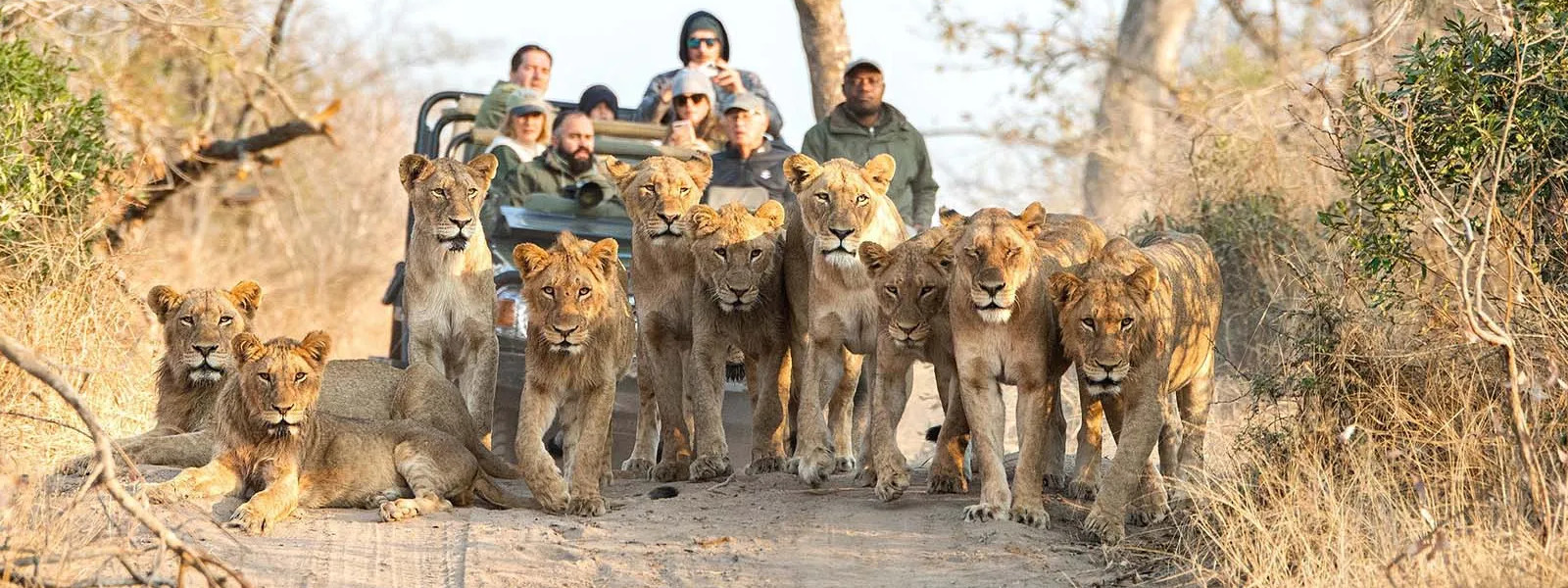Kruger National Park

KRUGER NATIONAL PARK
Roughly the same size as the state of Massachusetts, Kruger National Park is located in the subtropical eastern Mpumalanga region. Established by President Kruger in 1926, this sanctuary is inhabited by more species of wildlife than any other game reserve in Africa. Cape buffalo, leopard, lion, elephant and giraffe can be found along with over 460 species of bird. This world-renowned game reserve offers a wilderness experience you will never forget. View the “Big Five” by four-wheel drive vehicle or on foot in the company of a well-trained game ranger. The wilderness region surrounding Kruger National Park is made up of smaller, private game reserves. These safeguard a large proportion of the country’s wildlife resources. Luxurious game lodges and tented camps are located within these reserves and offer both day and night game viewing along with walking safaris. A large variety of animals and birds are showcased in these conservation minded reserves.
Climate
Kruger experiences a hot and tropical summer, from October to April, and this is when the park receives most of its annual rainfall. Storm activity is common during the afternoons. Winter months, from May to September, are more comfortable for visitors with milder temperatures, although it can get chilly overnight.
How to get there
By Air: Most visitors to Kruger fly into O.R. Tambo International Airport (JNB) near Johannesburg. From here a connecting flight goes to Nelspruit Airport/Kruger Mpumalanga International Airport (MQP) in Mpumalanga, the gateway to the southern sector of Kruger Park. Alternatively, fly to Hoedspruit (for the central and northern sections) or Phalaborwa (for the northern section). It is also possible to take a scheduled flight to Skukuza Airport inside the park (the southern sector) and Federal Airlines (see below) offers scheduled flights to some of the more upmarket lodges’ airstrips
What to See & Do
Kruger National Park offers magnificent wildlife viewing. All the major safari animals are present including the Big Five. The big cats are present in healthy numbers and lions in particular are frequently seen in the south of the park. Elephant and buffalo are common throughout, while white rhinos are increasingly under threat from poaching. A well-developed road network allows for easy access, a 4WD is not required.
Kruger National Park is home to more than 500 bird species – more than half of the birds recorded in South Africa. Approximately 200 of these are migratory species from Eurasia and north Africa. Migrants are present from November to April. Kruger is the best place in the country to see birds of prey; almost 80 species have been recorded, including 15 out of 17 eagles. The less visited northern part of the park (Pafuri and Punda Maria regions) offers the best bird watching. All the rest camps tend to be hotspots because there is a high concentration of trees and shrubs.
Best Time to Visit
The best wildlife viewing in Kruger is during the dry winter months from May to September. At this time the bush thins out and animals congregate around waterholes and rivers. Conditions tend to get better as winter progresses and September is particularly lovely since the mornings are a bit less chilly than in mid-winter. The best wildlife viewing time also coincides with the low season, making it even more attractive.